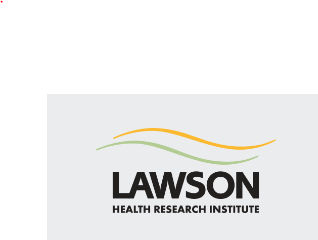预约演示
更新于:2025-05-07
Atypical hyperplasia
非典型增生
更新于:2025-05-07
基本信息
别名 Atypical Hyperplasia、Atypical hyperplasia、Atypical hyperplasia (morphologic abnormality) + [2] |
简介- |
关联
4
项与 非典型增生 相关的药物作用机制 JAK1抑制剂 [+1] |
原研机构 |
最高研发阶段批准上市 |
首次获批国家/地区 美国 |
首次获批日期2011-11-16 |
靶点 |
作用机制 PRKAB1激活剂 |
最高研发阶段批准上市 |
首次获批国家/地区 中国 |
首次获批日期1992-01-01 |
靶点 |
作用机制 ERs调节剂 |
最高研发阶段临床2期 |
首次获批国家/地区- |
首次获批日期1800-01-20 |
25
项与 非典型增生 相关的临床试验NCT06073184
Weight-loss Drug for Fertility-Sparing Treatment of Atypical Hyperplasia and Grade 1 Cancer of the Endometrium (WE-FiERCE)
The incidence of endometrial cancer is increasing at an alarming rate. This trend parallels the rising rate of obesity, the most significant risk factor for endometrial cancer. Young women with obesity and endometrial cancer or atypical hyperplasia who want to maintain their fertility are treated with progestin therapy, such as progestin intra-uterine device (pIUD), which is associated with a mediocre response rate and high recurrence rate, and does not address the underlying cause, obesity. Therefore, the investigators want to assess whether the addition of a weight-loss drug to pIUD will improve their oncologic, reproductive and metabolic outcomes.
开始日期2025-08-01 |
申办/合作机构 |
NCT06195306
Phase 2 Study of Low Dose Tamoxifen +/- High Dose Omega-3 Fatty Acids in Overweight Postmenopausal Women at Increased Risk for Breast Cancer
This phase II trial evaluates tamoxifen, with or without omega-3 fatty acids, for reducing risk of breast cancer among postmenopausal and overweight or obese women who are at increased risk of developing breast cancer. Tamoxifen is a selective estrogen receptor modulator. It works by blocking the effects of the hormone estrogen in the breast. Tamoxifen is approved by the Food and Drug Administration for prevention of breast cancer in women at increased risk. Omega-3 fatty acids have been shown to decrease the amount of fats made in the liver. Omega-3 fatty acids may work to prevent cancer in overweight or obese individuals. Tamoxifen with or without omega-3 fatty acids may be effective at reducing risk of breast cancer among women who are postmenopausal, overweight or obese, and at increased risk.
开始日期2025-04-01 |
申办/合作机构 |
NCT03868475
Efficacy, Safety, Cosmesis and Patient Satisfaction With Vacuum-Assisted Percutaneous Excision (VAPE) Compared With Standard Surgical Excision (X) of Non-malignant, Borderline or High-risk Breast Lesions: A Randomized Controlled Trial
This randomized controlled trial compares vacuum-assisted percutaneous excision to open standard surgical excision in women who have high-risk or borderline, non-malignant breast lesions with respect to efficacy, safety, cosmesis and patient satisfaction.
开始日期2025-01-01 |
100 项与 非典型增生 相关的临床结果
登录后查看更多信息
100 项与 非典型增生 相关的转化医学
登录后查看更多信息
0 项与 非典型增生 相关的专利(医药)
登录后查看更多信息
3,978
项与 非典型增生 相关的文献(医药)2025-05-01·Annals of Surgical Oncology
Trends in Atypical Ductal Hyperplasia Diagnosis and Upgrade: A 20-Year Experience and Impact of MRI Use on Upgrade Rates
Article
作者: Bedrosian, Isabelle ; Zaghloul, Tarek ; Albarracin, Constance T ; Zaveri, Shruti ; Patel, Miral ; Bevers, Therese B ; Sun, Susie X
2025-05-01·Breast Cancer Research and Treatment
Malignant upgrade in lesions of uncertain malignant potential in the breast (B3 lesions) – is open excision always necessary?
Article
作者: Amann, Niklas ; Preuss, Caroline I ; Hack, Carolin C ; Schiel, Janina ; Wetzl, Matthias ; Häberle, Lothar ; Heindl, Felix ; Jud, Sebastian M ; Schulz-Wendtland, Rüdiger ; Erber, Ramona ; Beckmann, Matthias W ; Hartmann, Arndt
2025-05-01·Annals of Surgical Oncology
ASO Visual Abstract: Trends in Atypical Ductal Hyperplasia Diagnosis and Upgrade—A Twenty-Year Experience and Impact of MRI Use on Upgrade Rates
Article
作者: Bedrosian, Isabelle ; Zaghloul, Tarek ; Albarracin, Constance T ; Zaveri, Shruti ; Patel, Miral ; Sun, Susie X ; Bevers, Therese B
1
项与 非典型增生 相关的新闻(医药)2025-04-05
·肿瘤界
点击蓝字 关注我们《健康中国行动—癌症防治行动实施方案(2023—2030年)》提出,到2030年,癌症防治核心知识知晓率达到80%以上。科学普及,言之有据。为保证肿瘤知识科普的权威性和严谨性,中国抗癌协会依托《中国肿瘤整合诊治指南》即CACA指南,按照疾病“防筛诊治康”的全流程管理体系,连续四年撰写了《中国肿瘤防治核心科普知识》,以CACA指南核心观点为创作源,全面推进我国肿瘤防治权威科普创作和推广。2025年全国肿瘤防治宣传周的主题为“CACA指南,我知你知,全程管理,全息发力”。中国抗癌协会组织专家编写了《中国肿瘤防治核心科普知识(2025)》,覆盖28个瘤种、41个技术,以通俗易懂的形式为大家分享核心知识,摘取部分内容,供参阅使用。问题1:乳腺癌的主要危险因素有哪些,如何针对性预防?核心观点一:遗传、年龄、月经、生育史为不可控高危因素。观点解读:女性年龄越大,发生乳腺肿瘤的累积风险会越高。初潮早、绝经晚、未生育或晚育也属高危。这类人群需定期筛查,包括专科体格检查,以及超声、钼靶等检查,早发现病变。如果家族中有乳腺癌患者或携带 BRCA1/2 基因致病突变者,可以考虑增加基因检测评估是否携带 BRCA1/2 基因致病突变。核心观点二:健康生活方式可降低乳腺癌发病风险。观点解读:控制体重、少吃高糖高脂食物、每周运动 150 分钟以上,能减少肥胖相关风险。同时戒烟限酒,避免长期接触放射线或致癌物,从生活习惯、饮食以及环境等方面切断危险因素。核心观点三:减少激素暴露和优化生育哺乳习惯。观点解读:非必要不长期使用雌激素类药物(如激素替代疗法) 。鼓励 30 岁前生育并母乳喂养至少 6 个月,调节体内激素水平,降低乳腺细胞异常增生风险。核心观点四:高危人群需定期筛查与监测。观点解读:有家族史或 BRCA1/2 基因致病突变者,建议从 25 岁起每年做乳腺超声或钼靶检查,必要时结合增强磁共振检查。不伴有这些危险因素的女性可在 40 岁后每年定期筛查,早发现早治疗可大幅提高治愈率。核心观点五:控制饮酒和避免被动吸烟。观点解读:酒精会提高雌激素水平,每日饮酒超 15 克(约 1 杯红酒)风险增加 10%。吸烟或长期接触二手烟也会增加乳腺癌的风险,戒烟并远离吸烟环境至关重要。问题2:有乳腺癌家族史的人群,应采取哪些预防措施?核心观点一:提早开始定期筛查,联合超声和钼靶检查。观点解读:乳腺癌家族史人群建议可以将常规筛查的年龄提前,比如从 30 岁开始,每年做乳腺超声检查,必要时结合乳腺 X 线钼靶检查。这两种检查互补性强,超声能发现致密乳腺中的肿块,钼靶擅长捕捉微小钙化灶,联合使用可提高早期病 变检出率。核心观点二:基因检测评估遗传风险,指导精准预防。观点解读:通过 BRCA1/2 等基因检测,能明确是否存在遗传性突变。若检测阳性,则属于高危人群,可考虑将常规筛查的年龄提前,并且增加筛查频率,手术的适应证也会适当放宽,阴性者可按常规筛查。核心观点三:健康体重 + 规律运动 + 饮食调控。观点解读:保持 BMI < 24,每周运动 150 分钟以上,避免高脂高糖饮食。这些措施可改善体质并降低肥胖的发生率,在一定程度上可降低乳腺癌的发病风险。核心观点四:高危人群可药物预防,需医生指导。观点解读:明确存在乳腺癌发病高危因素,或经手术病理确定存在重度非典型增生的患者,可在医生指导下用药进行乳腺癌化学预防,例如口服他莫昔芬。核心观点五:BRCA1/2 基因致病突变者需进行遗传咨询。观点解读:携带 BRCA1/2 基因致病突变者,需进行遗传咨询,进行相应的筛查策略调整。国外对于携带此基因致病突变的 35~40 岁女性,有医生会建议其完成生育后切除双侧乳腺(降低 90% 以上风险)和卵巢(降低 80% 卵巢癌风险)。但国内对于预防性手术的指征把握会更严格。问题3:生活方式如饮食、运动、作息对预防乳腺癌有何影响?核心观点一:减少高脂高糖饮食,增加膳食纤维摄入。观点解读: 高脂肪、高糖分食物易导致肥胖并且影响激素水平,从而在一定程度上增加乳腺癌风险。多吃蔬菜、水果、全谷物等富含纤维的食物,可调节激素代谢,从而降低患病概率。核心观点二:每周规律运动达标,降低乳腺癌风险。观点解读:建议每周进行 150 分钟中等强度或 75 分钟高强度运动。运动能控制体重、减少脂肪堆积,降低雌激素水平,同时增强免疫力,抑制异常细胞生长,有效预防乳腺癌。核心观点三:保持规律作息,避免熬夜,维持激素平衡。观点解读:熬夜会扰乱褪黑素分泌,影响雌激素代谢,导致激素失衡,增加乳腺病变风险。规律作息和充足睡眠有助于稳定激素水平,保护乳腺健康。核心观点四:健康生活方式综合降低乳腺癌风险。观点解读:虽然饮食、运动、作息不能完全杜绝乳腺癌,但三者结合可显著改善体质,减少患病概率。通过控制体重、调节激素和增强免疫力,形成多重防护机制,是经济有效的预防手段。当然,适龄女性每年定期到医院进行乳腺健康筛查也是非常必要的。问题4:乳腺良性疾病会增加乳腺癌风险吗,该如何处理?核心观点一:非典型增生等良性疾病可能增加乳腺癌发病风险。观点解读:类似于广泛的导管内病变,或非典型增生尤其是重度非典型增生等情况在一定程度上属于癌前病变,比普通人患乳腺癌的风险高数倍。这类患者需要更密切的监测,不能按常规体检处理。核心观点二:高危患者需每 6 ~ 12 个月影像复查。观点解读:通过乳腺 B 超、钼靶等检查定期追踪病变变化,能及时发现早期癌变迹象。对于新增的并且增大较为迅速的病灶可能会需要进一步诊断与处理。核心观点三:健康生活方式可降低癌变概率。观点解读:控制体重、少吃高脂肪食物、每周运动 3 ~ 5 次、戒烟限酒,这些行为能调节体内激素水平,减少对乳腺的不良刺激,从而降低乳腺癌发生风险。核心观点四:特定药物可阻断雌激素致癌作用。观点解读:对于乳腺癌高危风险的患者,他莫昔芬等药物能阻止雌激素刺激乳腺细胞,适合有家族史或基因突变的高危人群。但可能引发潮热、血栓等副作用,需医生评估后使用。问题5:定期体检对乳腺癌预防的重要性体现在哪些方面?核心观点一:早期发现乳腺异常,提高治愈率。观点解读:定期体检能发现无症状的乳腺肿块或病变,比如通过乳腺超声或钼靶检查。乳腺癌早期治愈率高达 90% 以上,而晚期治疗难度和费用大幅增加,定期检查可抓住最佳治疗时机。核心观点二:评估个体风险,制订筛查策略。观点解读:结合家族史、年龄、生活方式等因素,医生可评估患癌风险高低。高风险人群需更早、更频繁筛查(如每年一次),普通人群可适当降低频率。核心观点三:监测乳房变化,及时干预。观点解读:通过定期乳房自检,对比历年体检结果,能发现乳房内新出现的结节或原有肿块的生长趋势。快速生长可能提示癌变风险,早干预可避免病情恶化。核心观点四:增强健康意识,主动预防疾病。观点解读:体检过程中医生会普及乳腺自检方法,比如触摸检查是否有硬块,观察皮肤是否凹陷,乳头是否有溢液等。定期检查还能提醒女性关注乳房健康,养成良好生活习惯,降低患病风险。问题6:哪些人群属于乳腺癌的高风险筛查对象?核心观点一:一级亲属患乳腺癌或卵巢癌者。观点解读:母亲、女儿或姐妹中有人患乳腺癌或卵巢癌,血缘关系越近,患癌人数越多,则具有遗传风险的概率越高。这类人群需要比普通人更早、更频繁地筛查,建议每年进行乳腺超声或钼靶检查。核心观点二:携带 BRCA1/2 基因致病突变者风险显著增加。观点解读:BRCA1/2 基因致病突变会导致 DNA 修复功能缺陷,使乳腺癌发病率提高数十倍。这类人群建议从 25 岁开始每年筛查,必要时需做乳腺磁共振增强检查。核心观点三:乳腺不典型增生或原位癌病史者需警惕。观点解读:存在有“癌前病变”的患者,例如,曾患乳腺不典型增生或小叶原位癌的人群,需每 6 ~ 12 个月复查监测变化。核心观点四:青少年时期接受胸部放疗者风险高。观点解读: 10 ~ 30 岁间因淋巴瘤等疾病接受过胸部放疗的人,乳腺组织对辐射敏感,放疗后患癌风险随年龄增长递增,建议提前开始筛查。核心观点五:长期使用激素替代疗法者需重点监测。观点解读:更年期女性若持续使用雌激素 + 孕激素替代治疗超过 5 年,外源性激素会刺激乳腺细胞异常增生,这类人群应缩短筛查间隔至半年一次。核心观点六:初潮早、绝经晚或晚育人群风险升高。观点解读:月经初潮< 12 岁或绝经> 55 岁者,乳腺受雌激素影响时间更长;35 岁后首次生育的女性,孕激素保护作用减弱,这些人群均需加强筛查。问题7:目前常用的乳腺癌筛查方法有哪些,各有什么优缺点?核心观点一:乳腺 X 线(钼靶)常用有效,但对年轻女性及致密乳腺效果有限。观点解读:钼靶能精准发现钙化灶或结构扭曲的区域,是筛查乳腺癌的主要手段,但对年轻女性的致密乳腺组织穿透力差,容易漏诊。虽有辐射,但剂量较低,总体安全性可控。核心观点二:超声无辐射适合致密乳腺,但依赖医生经验。观点解读:超声没有辐射,特别适合年轻女性和致密型乳腺,能区分肿块是囊肿还是实体瘤。但检查结果受医生技术水平影响大,且难以发现微小钙化灶。核心观点三:增强 MRI 灵敏度高但费用昂贵,多用于高危人群。观点解读:增强 MRI 对肿瘤敏感,尤其适合乳腺癌高危人群或致密乳腺,但特异度相对稍低,并且检查耗时长费用高,通常不作为常规筛查项目。核心观点四:筛查需个体化选择,常需多种方法联合。观点解读:不同女性适用的筛查方式不同,比如年轻女性优先超声,高危人群加做增强 MRI。联合钼靶与超声可提高检出率,减少漏诊风险,医生会根据年龄、乳腺密度等制订方案。问题8:乳腺 X 线检查在乳腺癌筛查中的适用人群和注意事项?核心观点一:一般风险女性 40 ~ 69 岁应定期乳腺 X 线筛查。观点解读:普通女性从 40 岁开始,建议每 1 ~ 2 年做一次乳腺 X 线检查,能有效发现早期乳腺癌,降低死亡率。如果乳腺组织较致密,可结合超声或增强 MRI 提高准确性。核心观点二:高风险女性可从 35 岁起提前筛查。观点解读:有乳腺癌家族史、基因突变(如 BRCA1/2)等高风险女性,需提前到35 岁筛查,并根据医生建议选择检查方式(如 X 线联合增强 MRI),缩短筛查间隔。核心观点三:避免短期重复检查以减少辐射风险。观点解读:单次乳腺 X 线辐射量较低,但频繁检查可能累积放射风险,需遵医嘱控制检查频率,必要时用无辐射检查替代。核心观点四:致密型乳腺需联合超声或 MRI。观点解读:亚洲女性多为致密型乳腺,X 线可能漏诊,加做超声可发现隐藏肿块,MRI 则用于高危人群或复杂情况,提高检出率。核心观点五:筛查频率按风险调整为 1 ~ 2 年一次。观点解读:普通女性可每 1 ~ 2 年查一次钼靶检查,高危人群可每年查一次。具体需根据年龄、家族史、乳腺密度等调整,个性化方案更安全有效。问题9:乳腺 X 线、超声、增强 MRI 等影像学检查在乳腺癌诊断 中的作用和局限性是什么?核心观点一:乳腺 X 线检查对于结构扭曲、钙化性质的病灶具有优势。观点解读:乳腺 X 线(钼靶)是乳腺癌常用检查项目,在发现微小钙化、乳腺结构扭曲等方面具有极高的优势,尤其适合非致密型乳腺。对于老年女性而言,钼靶是首选的筛查工具,甚至可以替代增强磁共振检查,但对年轻女性和致密乳腺容易漏诊,且存在辐射风险,不建议频繁使用。核心观点二:超声检查对于肿块、结节性质的病灶具有优势。观点解读:超声检查安全无辐射,适合所有人群,因此同样作为乳腺癌筛查的首选工具,其在判断肿块或者结节的性质、形态、边界等方面具有极高的优势,对于乳腺高度致密的女性而言,同样能清晰显示是否存在肿块或者结节性质的病灶。但超声难以发现微小钙化,且结果准确性受医生操作水平影响较大,可能遗漏部分病变,因此多数情况下会与钼靶检查同时进行。核心观点三:增强 MRI 灵敏度最高但特异度稍低,费用高昂。观点解读:增强 MRI 对乳腺癌的检测灵敏度极高,适合高危人群筛查和术前评估,能精准显示肿瘤范围。但因特异性较低,可能将良性改变误判为需要警惕的区域,导致过度治疗。且检查费用高、耗时长,通常不作为常规筛查手段。核心观点四:联合多检查手段可互补短板。观点解读:单一检查均有局限性,临床常结合乳腺 X 线、超声和 MRI 联合诊断。例如,采用 X 线检查排除钙化或结构扭曲等异常情况,同时用超声筛查是否存在结节或 者肿块性质的病灶,对于高危人群,或者超声与钼靶检查结果存在矛盾的情况,可进一步增加乳腺增强 MRI 检查。医生会根据患者年龄、乳腺密度、风险等级等制订个性化方案。问题10:如何准确对乳腺癌进行分期,分期的依据和标准是什么?核心观点一:乳腺癌分期依据 TNM 系统评估肿瘤、淋巴结、转移情况。观点解读:TNM 系统是国际通用的癌症分期方法。T 指原发肿瘤的大小和是否侵犯周围组织,N 指癌细胞是否扩散到附近淋巴结,M 指是否有远处器官转移。医生根据这三个指标的组合来准确判断乳腺癌的严重程度。核心观点二:T 分级从 T0 到 T4,反映肿瘤大小及侵犯程度。观点解读:T0 代表未发现原发肿瘤,Tis 代表原位癌,T1 到 T3 表示肿瘤逐渐增大或侵犯周围组织,T4 代表肿瘤已侵犯胸壁或皮肤。肿瘤越大或侵犯范围越广,T 分级越高。核心观点三:N 分级从 N0 到 N3,衡量淋巴结转移范围。观点解读:N0 表示附近淋巴结未发现癌细胞,N1 到 N3 表示转移的淋巴结数量增多或位置更远,如腋窝、内乳或锁骨上淋巴结。淋巴结转移越多,病情越严重。核心观点四:M 分级分为 M0(无远处转移)和 M1(有转移)。观点解读:M0 表示癌细胞未转移到其他器官,M1 表示已转移到肺、骨等远处器官。 一旦出现远处转移,乳腺癌即被定为最晚的Ⅳ期,治疗难度显著增加。核心观点五:综合 TNM 确定分期 Ⅰ - Ⅳ , Ⅰ期早, Ⅳ期晚。观点解读:医生将 T、N、M 的结果组合后对应分期。例如,小肿瘤且未扩散(T1N0M0)为 Ⅰ期;若出现远处转移(任何 T/N 但 M1)则为Ⅳ期。分期直接决定治疗方案的选择。问题11:乳腺癌新辅助治疗的目的和适用人群、常用方案有哪些?核心观点一:新辅助治疗缩小肿瘤,提高保乳可能并评估疗效。观点解读:通过术前化疗或靶向治疗让肿瘤缩小,使原本需要全切的患者有机会保留乳房,同时根据治疗效果调整术后方案,并减少潜在的癌细胞转移风险,提高生存率。核心观点二:适用于局部晚期、炎性乳腺癌或希望增加保乳可行性的患者。观点解读:肿瘤较大、已扩散到淋巴结、炎性乳腺癌或希望保留乳房的患者,新辅助治疗能有效缩小肿瘤,提高手术成功率,并帮助医生判断哪种药物对患者最有效。核心观点三:HER2 阳性与三阴性乳腺癌的患者可适当放宽新辅助治疗指征。观点解读:HER2 阳性与三阴性乳腺癌对于新辅助治疗较为敏感,有更高的比例可以通过新辅助治疗达到临床完全缓解,从而提升总体治疗效果,因此更倾向放宽新辅助治疗指征。针对 HER2 阳性乳腺癌,使用曲妥珠单抗和帕妥珠单抗两种靶向药搭配化疗,能精准抑制癌细胞生长,显著提高治疗效果, 甚至让部分患者术后检测不到癌细胞。核心观点四:激素受体阳性患者可选化疗或内分泌治疗。观点解读:对于激素受体阳性并且拟行新辅助治疗的患者,除了新辅助化疗之外,也可能从新辅助内分泌治疗中获益,不过具体的方案需由专业领域医师来进行制订。问题12:乳腺癌治疗过程中,如何进行营养支持和心理干预?核心观点一:治疗全程动态评估营养,制订个性化方案。观点解读:从治疗开始到结束,定期评估患者营养状态,根据治疗反应调整饮食计划。例如,化疗期间恶心明显时,可增加易消化的高蛋白食物,帮助身体修复。核心观点二:高蛋白低糖饮食为主,多吃新鲜蔬果。观点解读:每天保证鱼虾、鸡蛋等优质蛋白摄入,控制精制糖和主食量。蔬菜水果提供抗氧化物质,促进免疫力恢复,避免加工肉和含糖饮料加重代谢负担。核心观点三:进食困难时及时采用营养补充手段。观点解读:当患者吞咽疼痛或食欲极差时,可服用营养粉冲剂补充能量。若肠胃功能正常但无法自主进食,可通过鼻饲管输入营养液,严重时由静脉输注营养。核心观点四:定期筛查心理状态,早发现情绪异常。观点解读:通过问卷调查或医患沟通,监测患者焦虑、失眠等情况。治疗中的脱发、体形改变易引发心理波动,及时干预可预防抑郁加重。核心观点五:构建医生 - 病友 - 家属三重支持体系。观点解读:心理医生教授情绪管理技巧,康复病友分享抗癌经验增强信心,家属参与护理培训,学会倾听和鼓励,共同营造积极康复环境。核心观点六:认知行为疗法纠正负面思维模式。观点解读:针对总担心复发或自我否定的患者,通过记录情绪日记、挑战错误认知等练习,将“我治不好了”转变为“积极配合就有希望”,改善心理状态。问题13:腺癌患者术后如何进行肢体功能锻炼,有哪些注意事项?核心观点一:术后锻炼分三阶段,由轻到强逐步恢复。观点解读:康复分早期、中期、后期逐步推进。早期先活动手指、手腕和肘部,防止关节僵硬;中期通过墙上爬高、肩部摆动等恢复肩部活动能力;后期用弹力带强化肌肉,完成肩部旋转等动作,全面恢复肢体功能。核心观点二:锻炼需循序渐进,避免过度用力。观点解读:术后肌肉和伤口需要时间愈合,锻炼强度要缓慢增加。例如,先做握拳, 再尝试抬手,最后抗阻训练。突然用力可能导致伤口撕裂或加重水肿,影响恢复。核心观点三:根据恢复情况制订个性化方案。观点解读:每个人的手术类型、体质差异大,需医生评估后制订计划。如淋巴结清 扫患者要减少手臂负重,而保乳手术患者可适当增加肩部活动范围,避免“一刀切”。核心观点四:锻炼后异常疼痛肿胀需及时就医。观点解读:轻微酸痛是正常现象,但如果患侧手臂持续刺痛、皮肤发热或肿胀明显,可能是感染或淋巴水肿加重,需立即停止锻炼并联系医生,调整康复方案。核心观点五:预防淋巴水肿,避免患肢提重物。观点解读:术后淋巴回流受阻,提重物或长时间下垂易引发水肿。建议患肢不提重物,睡觉时用枕头垫高,日常避免抽血、量血压等操作,降低水肿风险。问题14:如何预防和治疗乳腺癌术后的淋巴水肿?核心观点一:保护患肢防损伤感染,适度锻炼促循环。观点解读:术后避免患侧手臂提重物、受伤或高温刺激,防止感染引发水肿。每天做握拳、抬臂等轻柔运动,促进淋巴液回流,减少肿胀。核心观点二:穿戴弹力袖套辅助控肿。观点解读:长时间活动或乘坐飞机时,穿戴医用弹力袖套,通过适度外部压力维持淋巴液流动,预防水肿加重,需按医生建议选择合适尺寸。核心观点三:综合消肿治疗多手段结合。观点解读:包括皮肤护理、专业按摩引流、压力绷带和功能锻炼,需在康复师指导下分阶段进行,逐步改善淋巴循环,减轻肿胀。核心观点四:压力治疗联合物理器械消肿。观点解读:使用弹性绷带或定制压力衣,配合间歇性气压治疗仪,通过规律挤压促进淋巴流动,需长期坚持,避免水肿反复。核心观点五:药物或手术处理顽固病例。观点解读:严重水肿可短期使用利尿剂缓解症状,但需警惕副作用;药物治疗无效时, 可考虑淋巴结移植等手术,需严格评估适应证和风险。问题15:乳腺癌患者康复后如何进行自我监测和定期复查,复查项目有哪些?核心观点一:每月自检乳房,关注异常变化及全身症状。观点解读:推荐康复患者每月进行自我检查,定期至医院进行专科体格检查,对于全乳切除术后的患者检查患侧胸壁、对侧乳房、双侧腋窝以及锁骨上区域,对于保乳术后的患者检查双侧乳房以及局部淋巴引流区域。同时,若出现不明原因体重下降、持续疲劳、骨痛等全身不适,应立即就医排查复发风险。核心观点二:复查频率随康复年限延长逐步降低。观点解读:术后前 2 年每 3 ~ 6 个月复查一次,第 3 ~ 5 年每半年一次,5 年后每 年一次。随着康复时间增长,复发风险降低,复查间隔逐步延长,但需长期坚持监测。核心观点三:复查涵盖体格、影像及血液等基础项目。观点解读:每次复查需触诊乳房及周围淋巴结,每年做乳腺超声、钼靶或增强磁共振检查、胸部 CT。血液检查包括肿瘤标志物(如 AFP、CEA、CA125、CA199、 CA15-3)、血常规和肝肾功能,帮助评估身体状态及肿瘤活性。核心观点四:高风险患者需针对性增加骨扫描或脑部 MRI。观点解读:骨扫描用于排查骨转移,适合高复发风险患者;脑部 MRI 针对有中枢神经转移风险的人群。这些检查并非人人需要,需医生根据个体病情判断。核心观点五:个性化随访计划需结合医生建议调整。观点解读:患者年龄、病理类型、复发风险等因素不同,复查频率和项目需医生动态调整。患者应积极配合,按时检查,确保早发现、早干预。本文摘录自《中国肿瘤防治核心科普知识(2025)》推荐阅读● 《中国肿瘤防治核心科普知识(2025)》(肺癌)● 《中国肿瘤防治核心科普知识(2025)》(食管癌)● 《中国肿瘤防治核心科普知识(2025)》(胃癌)● 《中国肿瘤防治核心科普知识(2025)》(肝癌)● 《中国肿瘤防治核心科普知识(2025)》(胰腺癌)● 《中国肿瘤防治核心科普知识(2025)》(甲状腺癌)● 《中国肿瘤防治核心科普知识(2025)》(免疫治疗)● 《中国肿瘤防治核心科普知识(2025)》(化学治疗)声明:本文由“肿瘤界”整理与汇编,欢迎分享转载,如需使用本文内容,请务必注明出处。来源:中国抗癌协会科普平台官微编辑:lagertha审核:南星
放射疗法临床研究
分析
对领域进行一次全面的分析。
登录
或

生物医药百科问答
全新生物医药AI Agent 覆盖科研全链路,让突破性发现快人一步
立即开始免费试用!
智慧芽新药情报库是智慧芽专为生命科学人士构建的基于AI的创新药情报平台,助您全方位提升您的研发与决策效率。
立即开始数据试用!
智慧芽新药库数据也通过智慧芽数据服务平台,以API或者数据包形式对外开放,助您更加充分利用智慧芽新药情报信息。
生物序列数据库
生物药研发创新
免费使用
化学结构数据库
小分子化药研发创新
免费使用




